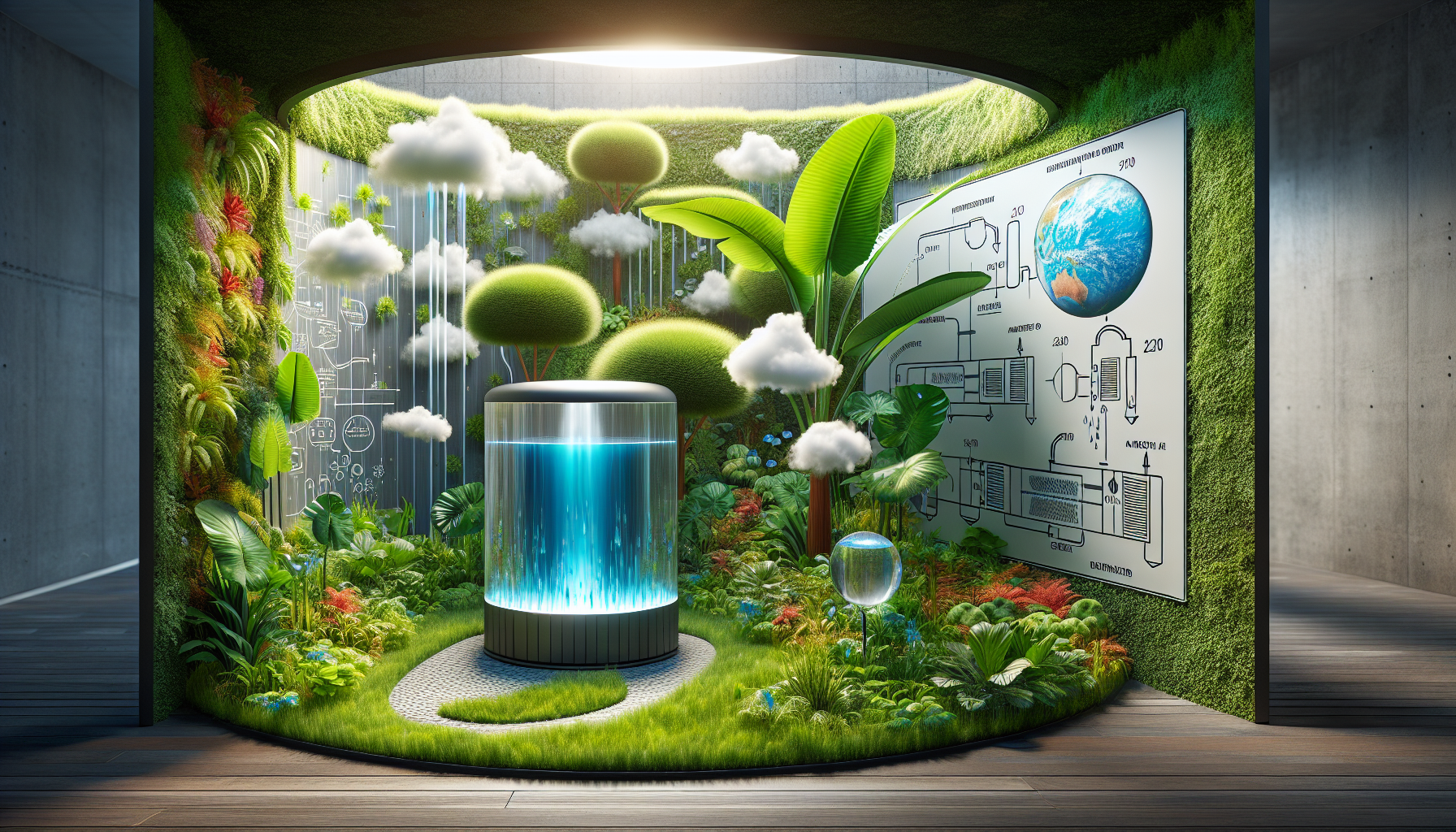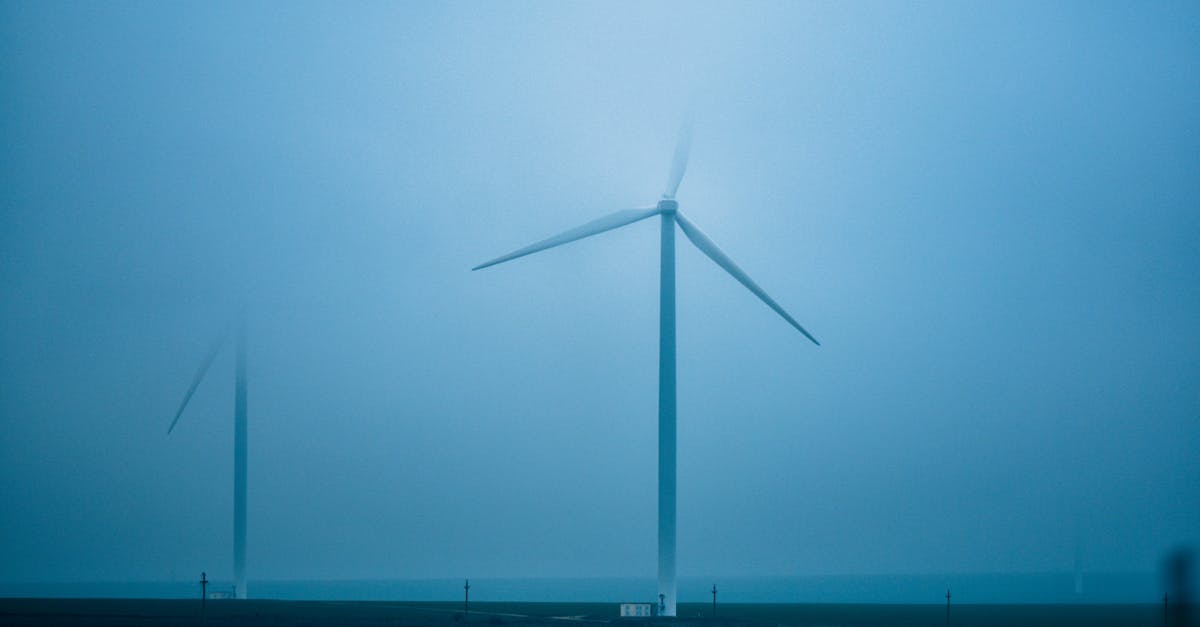Harnessing the Power of Air: Unveiling the Secrets of AWGs

Water from the Air: Unveiling the Mysteries of Atmospheric Water Generators
Imagine quenching your thirst with fresh, pure water that literally comes from the air around you. Sounds like a sci-fi dream, right? Well, it’s not. Atmospheric water generators (AWGs) are making this dream a reality, offering a groundbreaking way to harness nature’s abundance for our hydration needs.
Thank you for reading this post, don't forget to subscribe!
In this comprehensive guide, we’ll venture into the fascinating world of AWGs. We’ll dissect their ingenious inner workings, uncover the factors that govern their performance, and delve into the realm of their water-producing capabilities. Along the way, we’ll explore the pros and cons of AWGs to help you determine if these atmospheric water wizards are the perfect fit for your hydration journey.
So, buckle up, fellow water enthusiasts, as we embark on an extraordinary exploration of the wonders of AWGs. Whether you’re an eco-conscious adventurer seeking off-grid water solutions or simply curious about the latest advancements in water technology, this in-depth guide has something to quench your thirst for knowledge.
1. How Do AWGs Work?
Unveiling the Secrets of AWGs: How They Transform Air into Water
At the heart of an AWG lies a remarkable process that mimics nature’s own water cycle. It all starts with the air around us, invisible water vapor floating unseen. As the air is gently drawn into the AWG, it encounters a carefully engineered cooling system. This system cleverly extracts the heat from the air, causing the water vapor to condense into tiny water droplets. Just like clouds forming in the sky, these droplets coalesce into larger and larger droplets, until they’re heavy enough to be collected in a reservoir.
The beauty of AWGs lies in their simplicity and elegance. They harness the power of temperature variation to separate water from air, replicating the natural process of condensation that forms rain and dew. By controlling the temperature within the AWG, manufacturers can optimize the condensation process, ensuring efficient and reliable water production.
With their clever design and energy-efficient operation, AWGs are making waves as a sustainable and innovative solution for water scarcity. Whether it’s providing clean drinking water in remote communities or supplementing water supplies during droughts, AWGs are proving to be a valuable tool in the fight against water insecurity.
2. What Factors Affect the Performance of AWGs?
Unveiling the Factors that Govern AWG Performance
The performance of AWGs is not a one-size-fits-all affair. Several key factors come into play, influencing the amount of water an AWG can produce and how efficiently it operates. Let’s delve into the most influential factors:
Temperature: AWGs thrive in warm environments. The warmer the air, the more water vapor it holds. As the air inside the AWG is cooled, the water vapor condenses more readily, resulting in higher water production. Generally, AWGs perform optimally in temperatures ranging from 77°F to 86°F (25°C to 30°C).
Humidity: Humidity, the amount of water vapor present in the air, plays a crucial role. AWGs excel in humid climates, where there’s an abundance of water vapor to condense. In dry climates, AWGs may struggle to produce significant amounts of water, as the air contains less water vapor to begin with.
Size: The size of the AWG, particularly the size of its condenser, directly impacts its water production capacity. Larger AWGs, with bigger condensers, can process more air and condense more water vapor, resulting in higher water yields.
Understanding these factors is key to choosing the right AWG for your specific needs and location. By considering the temperature, humidity, and size of the AWG, you can ensure optimal performance and a reliable supply of fresh, clean water.
Temperature
Temperature: The Secret Ingredient for AWG Success
When it comes to AWGs, temperature is the golden key that unlocks their water-producing potential. AWGs are at their best in warm and humid environments, where the air is teeming with water vapor just waiting to be condensed. The ideal temperature range for AWGs is between 77°F and 86°F (25°C to 30°C).
Why is temperature so crucial? It all boils down to the physics of condensation. As air cools, its capacity to hold water vapor decreases. When the air inside the AWG is cooled below its dew point, the water vapor condenses into liquid water. So, the warmer the air, the more water vapor it can hold, and the more water the AWG can produce.
In cooler environments, AWGs may struggle to produce significant amounts of water because the air contains less water vapor to begin with. Additionally, low temperatures can slow down the condensation process, further reducing water production. Therefore, if you’re considering an AWG for your water needs, it’s essential to ensure you live in a climate that provides the necessary warmth and humidity for optimal performance.
Humidity
Humidity: The Invisible Ally of AWGs
Humidity, the invisible yet influential factor, plays a crucial role in the performance of AWGs. AWGs thrive in humid environments, where the air is saturated with water vapor, just waiting to be condensed into pure water. The ideal relative humidity range for AWGs is between 50% and 80%.
Why is humidity so important? It’s all about the amount of water vapor in the air. The higher the humidity, the more water vapor the air contains. And more water vapor means more water for the AWG to condense. In dry climates, where humidity levels are low, AWGs may struggle to produce significant amounts of water because there’s simply not enough water vapor in the air to condense.
To maximize the water production of your AWG, it’s best to place it in a humid environment, such as near a body of water or in a humidified room. By providing your AWG with ample water vapor, you’ll ensure a steady supply of fresh, clean water.
Size
Size: AWGs Tailored to Your Water Needs
The size of an AWG is not just a matter of aesthetics; it directly impacts its water production capacity. Larger AWGs, with their bigger condensers, can process more air and condense more water vapor, resulting in higher water yields. The size of the AWG you need will depend on your specific water requirements.
If you need a steady supply of water for a small household or off-grid living, a smaller AWG may suffice. These AWGs are compact and relatively affordable, making them a practical choice for individual or family use. However, if you have a larger water demand, such as for a community or commercial application, a larger AWG with a higher water production capacity would be a better fit.
It’s important to note that the size of the AWG is not the only factor to consider. The temperature and humidity of your environment will also influence the actual water production. By carefully considering your water needs and the specific conditions of your location, you can choose the right AWG size to meet your requirements.
3. How Much Water Can AWGs Produce?
Water Yield: Unveiling the AWG’s Production Power
The amount of water an AWG can produce is not a fixed value; it varies depending on two key factors: the size of the AWG and the climate in which it’s used. Smaller AWGs, with their compact size and lower power consumption, can typically produce up to 5 gallons of water per day. These AWGs are ideal for individual or small household use, providing a steady supply of fresh water.
On the other hand, larger AWGs, with their increased capacity and more powerful components, can produce significantly more water, up to 100 gallons per day or even more. These AWGs are designed for larger water demands, such as those of communities, businesses, or off-grid systems.
However, it’s important to note that the climate plays a crucial role in determining the actual water yield of an AWG. AWGs perform best in humid climates, where the air is saturated with water vapor. In these conditions, AWGs can operate at maximum efficiency, producing the highest amount of water.
In drier climates, where humidity levels are lower, AWGs may not be able to produce enough water to meet your needs. Therefore, it’s essential to consider the climate of your area when choosing an AWG and to manage your expectations accordingly.
4. Are AWGs Right for You?
AWGs: A Decision for Your Water Needs
Whether or not an AWG is the right choice for you depends on your specific situation and needs. Here’s a closer look at the pros and cons to help you make an informed decision:
Pros:
- Reliable water source: AWGs offer a reliable source of clean water, even in areas where traditional water sources are scarce or unreliable. They can provide peace of mind knowing you have access to safe drinking water.
- Sustainable solution: AWGs harness the power of nature to create water, making them a sustainable and environmentally friendly option. They don’t rely on depleting groundwater or polluting water sources.
- Compact and convenient: Smaller AWGs can be compact and convenient, making them suitable for homes, apartments, or even RVs. They can be easily placed in a dedicated space or even on a countertop.
Cons:
- Cost: AWGs can be expensive to purchase and operate. The initial investment can be significant, and the ongoing costs of electricity and maintenance can add up over time.
- Maintenance: AWGs require regular maintenance to ensure they operate efficiently and produce clean water. This may involve cleaning, filter changes, and other tasks.
- Water production limitations: AWGs are not miracle machines that can produce unlimited water. Their water production capacity is influenced by factors such as size, climate, and maintenance. It’s important to manage your expectations and understand the limitations of your AWG.
Ultimately, the decision of whether or not an AWG is right for you depends on factors such as your budget, water needs, and lifestyle. If you’re looking for a reliable and sustainable water source, and you’re willing to invest in the upfront and ongoing costs, an AWG could be a valuable addition to your home or off-grid system.
What are the main advantages of using AWGs?
AWGs offer several advantages, including providing a reliable source of clean water, being a sustainable solution, and being compact and convenient.
What are the key factors that affect the performance of AWGs?
The performance of AWGs is primarily influenced by temperature, humidity, and size. AWGs perform best in warm, humid climates and with larger condenser sizes.
How much water can I expect to get from an AWG?
The water yield of AWGs varies depending on their size and the climate in which they are used. Small AWGs can produce up to 5 gallons of water per day, while larger AWGs can produce up to 100 gallons or more.
Are AWGs suitable for all locations?
AWGs are most effective in humid climates. In dry climates, AWGs may not be able to produce enough water to meet your needs.
What are the ongoing costs associated with owning an AWG?
AWGs require regular maintenance, including cleaning and filter changes. They also consume electricity to operate, which can add to the ongoing costs.




